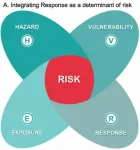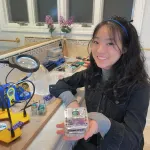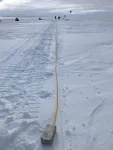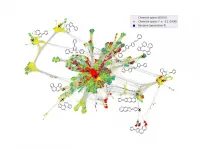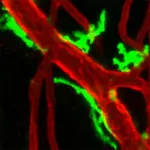(Press-News.org) Researchers from Trinity College Dublin have discovered that some skeletal defects associated with a lack of movement in the womb during early development may still be ameliorated after such periods of immobility if movement resumes.
The researchers' discovery was made using chicken embryos, which develop similarly to their human equivalents and which can be easily viewed as development takes place - raising hopes that the finding may also apply to humans and thus have important implications for therapeutic interventions.
The research has just been published in leading international journal, Disease Models and Mechanisms.
Why babies need to move in the womb
Foetal movement in the uterus is a normal part of a healthy pregnancy and previous research by the group has shown that key molecular interactions that guide the cells and tissues of the embryo to build a functionally robust yet malleable skeleton are stimulated by movement.
If an embryo doesn't move, a vital signal may be lost or an inappropriate one delivered in error, which can lead to the development of brittle bones or abnormal joints. As such, reduced or absent movement can lead to problems with development of bones and joints including joint dysplasia and temporary brittle bone disease in infants.
The researchers behind the current work have previously uncovered what precisely goes wrong at a cellular and molecular level when embryo movement is restricted, showing when and which bones and joints are affected (see: https://bit.ly/3crcrS5).
The new findings
In the new study the researchers asked what happens if movement resumes after a defined period of movement restriction early in development. They specifically addressed whether joint and spine formation can recover.
Dr Rebecca Rolfe, Research Fellow in Zoology, in Trinity's School of Natural Sciences, is the first author of the journal article. She said:
"We compared resumption of normal movement to hyperactive movement and found that limb joints recover better than spinal defects and, among specific limb joints, those of the hips and knees recover best under the conditions tested.
"We also found that hyperactive movement led to greater improvement in joint development, especially at the hip, indicating that clinical conditions resulting from reduced activity of the foetus in the womb could be ameliorated with physical movement or manipulation even after an initial problem becomes apparent."
Paula Murphy, Professor in Zoology in Trinity's School of Natural Sciences, and senior author of the journal article, added:
"This work essentially demonstrates that movement post-paralysis can partially recover specific aspects of joint development, which we hope could inform therapeutic approaches to ameliorate the effects of human foetal immobility.
"Skeletal defects at birth can present significant hurdles for infants to overcome in trying to lead normal, healthy lives. Although this will not lead immediately to new therapeutic options it gives specific indications of the types of therapy that would be potentially beneficial."
INFORMATION:
The new alloys created by NUST MISIS scientists in cooperation with LG Electronics will help reduce the weight of radiators and heat removal systems in electric vehicles and consumer electronics by one third. The research results are published in the Journal of Magnesium and Alloys.
According to experts, with the development of electronics the problem of efficient heat removal is becoming more and more acute -- with an increase in the productivity of equipment, heat generation also grows. Reducing the temperature directly affects the prolongation of the devices' life cycle. This is especially important for household appliances, electric vehicles, LED panels.
Scientists from NUST MISIS, in collaboration with LG Electronics, ...
"Jack and Jill went up the hill to fetch a pail of water." It's a silly rhyme, but one that highlights a simple fact: Humans have long relied on wells -- such as the one on the hill visited by Jack and Jill -- for their primary drinking water supply.
Although the number of people who draw their water by pail is declining as pumps become ever more widespread, groundwater wells still supply drinking water to more than half of the world's population and sustain over 40% of irrigated agriculture. But this vital resource underfoot often gets overlooked.
UC Santa Barbara assistant professors Debra Perrone and Scott Jasechko have compiled the most comprehensive assay of groundwater wells to date, spanning 40 countries that collectively account for half of all global groundwater ...
A team of researchers from the Africa Climate and Development Initiative (ACDI) led a global team of 21 climate risk scholars to better understand and inform decision making around climate change risks in Africa and globally by examining how the drivers of risk interact.
Their work extends on existing risk frameworks with the hope that this research could help decision makers, managers and researchers understand the inherent complexity of climate change.
"Understanding the interactions among risks holds potential to change the way we respond to the risks. This is important because policy makers may worry about the risk of implementing a response as much, or more so, than the risk ...
A Southern California high school junior has built a low-cost seismometer device that delivers earthquake early warnings for homes and businesses. Costing less than $100 for her to make today, the seismometer could someday be a regular household safety device akin to a smart smoke detector, says its inventor Vivien He.
About the size of a Rubik's cube and encased in clear acrylic, the seismometer has a sleek, consumer-ready look. The device's geophone detects incoming ground motion, while onboard hardware and software translate the geophone's electrical signals into a digital waveform. The device has detected all earthquakes over magnitude 3.0 around Los Angeles since September 2020.
When ...
At the Seismological Society of America's 2021 Annual Meeting, researchers shared how they are using fiber optic cable to detect the small earthquakes that occur in ice in Antarctica.
The results could be used to better understand the movement and deformation of the ice under changing climate conditions, as well as improve future monitoring of carbon capture and storage projects, said Anna Stork, a geophysicist at Silixa Ltd.
Stork discussed how she and her colleagues are refining their methods of distributed acoustic sensing, or DAS, for microseismicity--earthquakes too small to be felt. DAS works by using the tiny internal flaws within an optical fiber as thousands of seismic ...
A deep spatiotemporal neural network trained on more than 36,000 earthquakes offers a new way of quickly predicting ground shaking intensity once an earthquake is underway, researchers report at the Seismological Society of America (SSA)'s 2021 Annual Meeting.
DeepShake analyzes seismic signals in real time and issues advanced warning of strong shaking based on the characteristics of the earliest detected waves from an earthquake.
DeepShake was developed by Daniel J. Wu, Avoy Datta, Weiqiang Zhu and William Ellsworth at Stanford University.
The earthquake data used to train ...
The SEIS seismometer package from the Mars InSight lander has collected its first continuous Martian year of data, revealing some surprises among the more than 500 marsquakes detected so far.
At the Seismological Society of America (SSA)'s 2021 Annual Meeting, Savas Ceylan of ETH Zürich discussed some of the findings from The Marsquake Service, the part of the InSight ground team that detects marsquakes and curates the planet's seismicity catalog.
Marsquakes differ from earthquakes in a number of ways, Ceylan explained. To begin with, they ...
How can I prepare myself for something I do not yet know? Scientists from the Fritz Haber Institute in Berlin and from the Technical University of Munich have addressed this almost philosophical question in the context of machine learning. Learning is no more than drawing on prior experience. In order to deal with a new situation, one needs to have dealt with roughly similar situations before. In machine learning, this correspondingly means that a learning algorithm needs to have been exposed to roughly similar data. But what can we do if there is a nearly infinite amount of possibilities so that it is simply impossible to generate data ...
Cardiovascular disease, the most common cause of death, is the result of oxygen deprivation as blood perfusion to affected tissue is prevented. To halt the development of the disease and to promote healing, re-establishment of blood flow is crucial. Researchers at Uppsala University have now discovered that one of the most common immune cells in the human body, macrophages, play an important role in re-establishing and controlling blood flow, something that can be used to develop new drugs.
The classic function of immune cells is to defend the body against attacks from microorganisms and tumour cells. Macrophages are immune cells specialised in killing and consuming microorganisms but they have ...
How primates get from A to B gives vital information about their cognitive evolution, say researchers in a new study looking at the travel paths of animals in the wild. Using data from 164 wild primate populations, the global survey examines the mental abilities that primates, including ourselves, use to know where and when to travel in the most efficient way.
A birds eye view
Co-author Miguel de Guinea, expert in Evolutionary Anthropology at Oxford Brookes University commented: "Imagine looking down on a huge outdoor market from high in the sky, perhaps from a drone hovering quietly above. The people below move in different ways. Some wander haphazardly among the stalls: they are learning what's available but are clearly not busy. Others take bee-line routes ...

